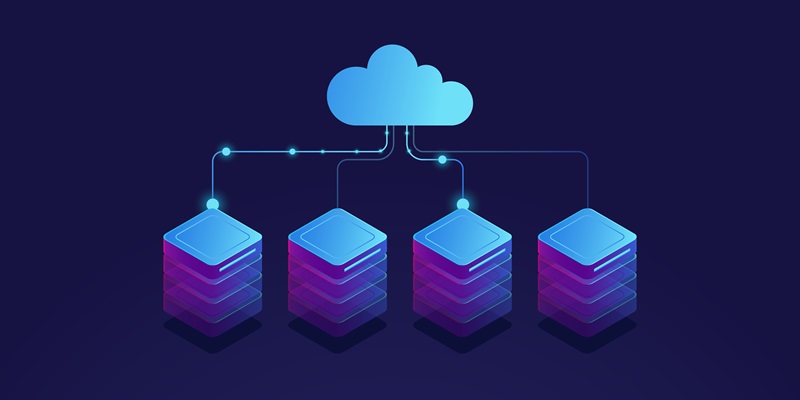The integration of artificial intelligence (AI) with cloud computing has revolutionized the way businesses operate and made significant advancements in various areas. This article explores the profound impact of AI on cloud computing, focusing on automation, intelligent decision-making, security enhancement, real-time threat detection, data processing, advanced analytics, natural language processing, enhanced user experience, and innovation and development.
Automation: Revolutionizing Cloud Computing
AI has played a pivotal role in transforming cloud computing through its automation capabilities. With AI algorithms in place, routine and mundane tasks can now be automated, freeing up human resources for more strategic and critical initiatives. Automation not only saves time and effort but also ensures accuracy and precision in executing various cloud-related processes.
Intelligent Decision-Making: Analyzing Data Without Human Intervention
One of the defining features of AI is its ability to analyze massive amounts of data and make intelligent decisions without human intervention. With AI algorithms, cloud systems can quickly sift through vast data sets, identifying patterns, trends, and anomalies that human analysts might overlook or take significantly longer to identify. This expedites decision-making processes and enables organizations to respond swiftly and effectively to emerging challenges and opportunities.
Security Enhancement: Safeguarding Cloud Computing
Security is a top concern for businesses in the cloud computing era, and AI has stepped up to enhance security capabilities significantly. AI-powered security systems leverage machine learning algorithms to detect and respond to potential attacks in real time. These systems continuously learn from patterns and behaviors, enabling them to adapt and counteract sophisticated threats. By bolstering security measures, AI ensures the integrity, confidentiality, and availability of data stored and processed in the cloud.
Real-Time Threat Detection: Preemptive Security Measures
Traditional security measures often rely on reactive approaches, responding to threats after they have already caused damage. AI-powered security systems, on the other hand, excel in detecting threats in real time. By analyzing and correlating vast amounts of data from multiple sources, AI algorithms can identify potential security breaches and take proactive measures to neutralize them before they can cause harm. This preemptive approach significantly reduces the risk of sensitive data breaches and strengthens overall cybersecurity posture.
Data Processing: Speed and Efficiency
AI algorithms have exhibited remarkable capabilities in processing and analyzing vast amounts of data at unprecedented speeds. Unlike humans, who might take hours or even days to process data, AI algorithms can accomplish the same task in a fraction of that time. This accelerated data processing enables organizations to extract valuable insights quickly, fueling data-driven decision-making and increasing operational efficiency across various cloud computing tasks.
Advanced Analytics: Uncovering Hidden Trends and Patterns
AI-powered analytics bring immense value to businesses by uncovering trends and patterns that may not be immediately apparent to human analysts. By processing and analyzing vast datasets, AI algorithms can identify correlations, anomalies, and predictive patterns that human analysts might miss. These insights can inform business strategies, optimize operations, and drive innovation, empowering organizations to stay ahead of the competition and make informed decisions based on accurate and comprehensive data analysis.
Natural Language Processing: Simplifying User Interactions
Another significant capability brought about by AI integration is natural language processing (NLP). NLP algorithms enable users to interact with cloud systems using voice commands or text inputs, eliminating the need for complex interfaces or technical expertise. This opens up cloud computing to a broader user base, making it accessible and user-friendly. Additionally, AI-powered chatbots leverage NLP to provide instant support and assistance to users, enhancing their overall experience with cloud services.
Enhanced User Experience: Instant Support and Assistance
AI-powered chatbots have revolutionized the way users interact with cloud systems, bringing about instant support and assistance. These chatbots can address queries, provide solutions to common problems, and guide users through complex tasks. By leveraging AI’s ability to learn and improve over time, chatbots offer personalized assistance, enhancing the user experience and fostering customer satisfaction.
Innovation and Development: Unleashing Creativity
The integration of AI and cloud computing has paved the way for the development of innovative applications and services. AI-powered technologies enable businesses to harness the potential of cloud computing to drive advancements in areas like healthcare, finance, manufacturing, and more. Whether it’s leveraging AI for predictive maintenance, analyzing large-scale genomic data, or optimizing supply chain operations, the fusion of AI and cloud computing has unlocked countless opportunities for innovation and development.
The future of AI in cloud computing looks exceptionally promising. With ongoing advancements in AI technologies, cloud computing will continue to benefit from increased automation, enhanced security, real-time threat detection, expedited data processing, advanced analytics, simplified user interactions, and improved user experiences. As AI continues to evolve, businesses can expect even greater collaboration between AI and cloud computing, unlocking new realms of efficiency, productivity, and innovation. Embracing this transformative synergy will undoubtedly position organizations at the forefront of the digital revolution.

